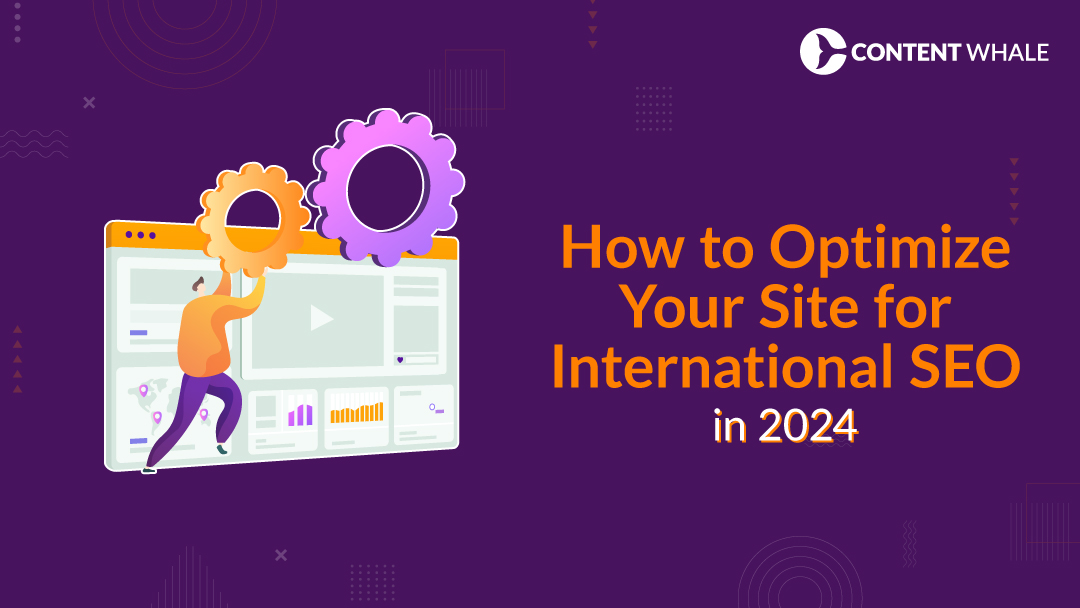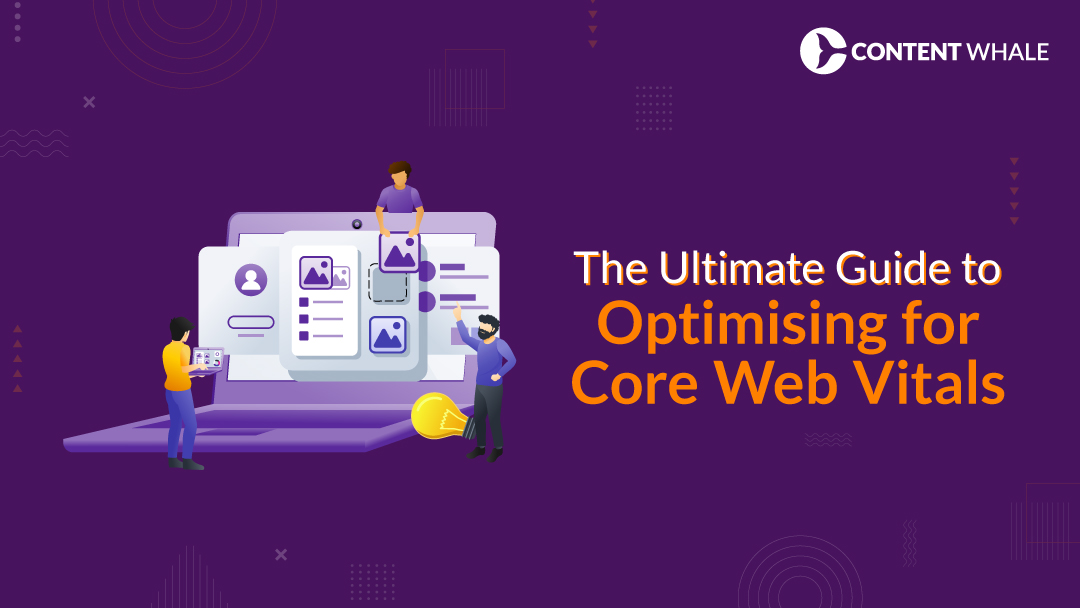Quick Summary:
Understanding the basics of international SEO is crucial for expanding your online presence. Implement effective global SEO strategies to reach audiences worldwide. Learn about essential tools and best practices for successful international search engine optimization.
What is International SEO and Why is it Important?
International SEO is the process of optimizing your website to rank higher in search engines for various countries and languages. This approach, often referred to as global SEO, is essential for businesses aiming to expand their reach beyond their domestic markets. By implementing international search engine optimization, you ensure your content is accessible and relevant to users worldwide, which can significantly boost your global presence.
Challenges of Reaching Global Audiences
Expanding your online presence across borders comes with unique challenges. Different countries have distinct languages, cultural norms, and search engine preferences. This means that a one-size-fits-all approach won’t work. Effective multilingual SEO involves not only translating content but also localizing it to fit the cultural context of each target market. This ensures that your content resonates with local audiences and meets their specific needs.
Benefits of Optimizing for International SEO
Investing in international SEO offers numerous benefits. By optimizing your website for different regions and languages, you can tap into new markets and attract a broader audience. This can lead to increased organic traffic and higher conversion rates. Global digital marketing strategies help enhance your brand’s visibility on a worldwide scale, ultimately driving more revenue. By implementing multilingual website SEO techniques, you ensure your site is well-optimized for users in different parts of the world, leading to better user engagement and satisfaction.
Understanding International SEO

International SEO involves optimizing your website so that search engines can easily identify which countries you want to target and which languages you use for business. This is a step beyond local SEO, which focuses on optimizing for a specific geographic location. Global SEO considers the complexities of multiple regions and languages to ensure your content is found by a broader audience.
Difference Between International and Local SEO
While local SEO focuses on optimizing for searches within a specific area, international SEO aims at reaching a global audience. This includes considering different languages, cultural contexts, and local search behaviors. Multilingual SEO ensures that your content is not only translated but also culturally relevant to each target market.
Importance of Multilingual and Multiregional SEO
Cross-border SEO is crucial for businesses looking to expand their reach. It involves understanding and implementing strategies that cater to different regions and languages. This means using the right keywords for each market, ensuring that your website structure supports multiple languages, and making sure that your content is relevant to local audiences. By doing so, you enhance your global visibility and improve your chances of success in international markets.
Key Strategies for International SEO
Conducting Market Research
Effective international SEO begins with thorough market research. Identify the countries and languages that are most relevant to your business. This involves analyzing search trends, understanding local competitors, and recognizing the unique needs of your target audience. Tailoring your strategy to each specific market is crucial for success in global optimization.
Implementing Hreflang Tags
Hreflang tags are essential for multilingual SEO. These tags help search engines understand the language and regional targeting of your webpages. By using hreflang tags correctly, you can ensure that your content is shown to the right audience, avoiding issues with duplicate content and improving your cross-border SEO efforts.
Creating Country-Specific Content
Creating content that resonates with local audiences is a key aspect of international search engine optimization. This means not just translating your content but localizing it to fit the cultural context of each target market. Use local keywords and phrases that are specific to each region to enhance your multilingual website SEO. This approach makes your content more engaging and relevant, which can lead to higher search engine rankings and better user engagement.
Technical Aspects of International SEO
Setting Up Domain Structures
Choosing the right domain structure is crucial for effective international SEO. There are several options to consider:
- Country Code Top-Level Domains (ccTLDs): Using domains like .uk for the United Kingdom or .fr for France can clearly indicate to search engines and users which country your content is targeting. This method can enhance trust and relevance in the targeted region.
- Subdomains: Creating subdomains like fr.example.com for France allows you to separate your content for different regions while keeping everything under a single domain. This can simplify management and still provide clear regional targeting.
- Subdirectories: Using subdirectories like example.com/fr/ for France combines the simplicity of a single domain with the ability to target different regions. This approach is often easier to manage and maintain.
Ensuring Proper Geo-Targeting in Google Search Console
Geo-targeting settings in Google Search Console help you inform Google about the regions you are targeting. By specifying the target country for your site, you can improve your global SEO efforts and ensure that your content is shown to the appropriate audience. This is especially important for multilingual SEO as it helps avoid confusion and ensures that users find the most relevant version of your content.
Managing Duplicate Content Issues
Duplicate content can harm your SEO efforts, especially when dealing with multiple languages and regions. To manage this, use canonical tags and hreflang attributes effectively. Canonical tags tell search engines which version of a page is the primary one, preventing issues with duplicate content. Hreflang attributes, on the other hand, indicate the language and regional targeting, ensuring that the right version of your page is shown to the right audience. These practices are essential for maintaining a clean and effective international search engine optimization strategy.
Content Optimization for Global Audiences

Translating and Localizing Content
For effective international SEO, translating your content is just the first step. Localization is equally important. This means adapting your content to the cultural context of each target market, ensuring it resonates with local audiences. Multilingual SEO involves not only language translation but also adjusting idioms, examples, and cultural references to make the content more engaging and relevant.
Importance of Culturally Relevant Content
Culturally relevant content can significantly enhance user engagement and trust. When users find content that speaks directly to their cultural norms and values, they are more likely to interact with it and convert. This approach goes beyond mere translation, focusing on creating a connection with the audience through localized storytelling and examples. This is a key aspect of global optimization and multilingual website SEO.
Using Keywords Specific to Each Target Market
Effective keyword research is critical for international SEO. Each market has its own unique search behaviors and preferences. By identifying and using local keywords, you can optimize your content to match the search intent of users in different regions. This not only improves your search engine rankings but also ensures that your content is highly relevant to the local audience. Incorporating local keywords into your cross-border SEO strategy is essential for achieving higher visibility and engagement.
Building Backlinks for International SEO
Importance of Obtaining Local Backlinks
Backlinks remain a critical factor in SEO, and this is especially true for international SEO. Securing backlinks from reputable local websites in your target countries can significantly boost your site’s authority and relevance in those regions. These local backlinks signal to search engines that your content is valuable and trustworthy in the specific market you’re targeting, enhancing your global SEO efforts.
Strategies for Outreach and Link Building in Different Regions
- Localized Outreach: Tailor your outreach emails and messages to fit the cultural and linguistic preferences of each region. Personalized and culturally appropriate communication increases your chances of securing backlinks.
- Local Partnerships: Collaborate with local influencers, bloggers, and businesses to build relationships and earn backlinks. These partnerships can provide valuable insights and connections within the local market.
- Content Marketing: Create high-quality, localized content that appeals to your target audience. Share this content on local platforms and social media to attract attention and earn backlinks.
Real Case Studies of Successful International Backlinking Campaigns
| Company | Strategy | Results |
|---|---|---|
| Viking | Focused on seven key countries, employed native language marketing experts for keyword research, created localized content, and implemented a strong backlinking strategy. | Increased organic traffic by 140% in Austria and 60% in France. |
| Canva | Developed scalable landing page structures, invested in backlink outreach, created a strong domain authority through high-quality backlinks from authoritative sites. | Achieved significant global success with enhanced search engine rankings. |
| Zephyr | Implemented a unified digital marketing strategy, targeted high-authority sites, and ensured keyword-rich content. | Saw a 100% increase in lead volume and a significant decrease in cost per acquisition. |
| Venngage | Conducted extensive market research, created relevant content, leveraged high-quality backlinks by forming partnerships with authoritative sites. | Gained significant brand visibility and increased product sign-ups. |
| Airtable | Customized database structure, optimized SEO metrics, and improved search engine performance. | Gained significant traction in international markets. |
These case studies highlight the importance of a well-rounded backlinking strategy tailored to specific markets. By focusing on localized content, cultural relevance, and high-quality backlinks, businesses can significantly improve their international SEO performance and achieve global success.
Monitoring and Analyzing International SEO Performance
Tools and Metrics to Track International SEO Performance
Effective international SEO requires consistent monitoring and analysis. There are several tools and metrics that can help you track your global SEO performance:
- Google Analytics: This tool allows you to monitor website traffic, user behavior, and conversion rates across different regions. You can set up custom reports to track the performance of specific countries and languages, helping you understand how your multilingual SEO efforts are paying off.
- Google Search Console: Essential for identifying technical issues and monitoring search performance, Google Search Console provides insights into which queries bring users to your site. It also helps you manage your site’s presence in Google search results, especially useful for international search engine optimization.
- Ahrefs: This tool offers comprehensive backlink analysis, keyword tracking, and site audit features. It’s particularly useful for monitoring the performance of your cross-border SEO campaigns by tracking the backlinks from different regions and assessing their impact on your rankings.
- SEMrush: SEMrush provides a detailed overview of your site’s SEO performance. It includes features like keyword research, site audits, and competitive analysis, making it a valuable tool for global optimization. You can track your rankings in different countries and analyze the effectiveness of your global digital marketing strategies.
- Moz: Known for its keyword tracking and link analysis capabilities, Moz helps you keep track of your SEO efforts. It also offers insights into local and global search rankings, making it easier to manage your multilingual website SEO.
Setting Up Google Analytics and Search Console for Multiple Regions
To get the most out of Google Analytics and Search Console, it’s important to set them up correctly for multiple regions. Here’s how:
Google Analytics:
- Property and View Setup: Create different views for each region or country you are targeting. This allows you to analyze traffic and user behavior specific to each region.
- Goals and Funnels: Set up goals to track conversions for each region. This helps you understand which areas are performing well and which need improvement.
- Custom Reports: Create custom reports to track metrics like sessions, bounce rates, and conversion rates for different countries. This gives you a clear picture of your international SEO performance.
Google Search Console:
- Property Setup: Add and verify your website for each target region. Use the International Targeting report to specify the target country for each site or subdomain.
- Hreflang Tags: Ensure that hreflang tags are correctly implemented to avoid duplicate content issues and to signal to Google the language and regional targeting of your pages.
- Performance Reports: Use the performance reports to track search queries, impressions, and clicks from different regions. This helps you understand how your site is performing in various markets.
Regularly Auditing and Updating SEO Strategies Based on Performance Data
Regular audits are essential to ensure your international SEO strategies remain effective. Here’s a step-by-step approach:
Technical SEO Audit:
- Check for issues like broken links, duplicate content, and site speed. Tools like Google Search Console and Ahrefs can help identify these problems.
- Ensure that your hreflang tags and canonical tags are correctly implemented to manage regional and language-specific content.
Content Audit:
- Review your content to ensure it is still relevant and accurate for each target region. Update any outdated information and optimize for new keywords that may have emerged.
- Ensure that your content is culturally appropriate and resonates with the local audience.
Backlink Audit:
- Analyze your backlink profile to ensure you are receiving high-quality backlinks from reputable sources. Tools like Ahrefs and Moz can help you track your backlinks and identify opportunities for improvement.
- Reach out to local websites, influencers, and bloggers to build more high-quality backlinks.
Performance Analysis:
- Regularly review your performance data in Google Analytics and Search Console. Look for trends and patterns that can inform your strategy adjustments.
- Set up regular reports and alerts to monitor key metrics and identify any sudden changes that may require immediate attention.
By consistently monitoring, analyzing, and updating your international SEO strategies, you can ensure sustained success in your global optimization efforts. These practices help you stay ahead of the competition and effectively reach your global audience.
Conclusion

International SEO is essential for businesses that want to reach a global audience. It involves optimizing your website so that search engines can identify the countries and languages you are targeting. By doing so, you ensure that your content is relevant and accessible to users worldwide. This not only improves your site’s visibility but also increases your chances of attracting and converting international customers.
Key Strategies:
- Market Research: Understanding your target countries and languages is the first step. This involves analyzing search trends, local competitors, and the unique needs of each market. This foundation helps you tailor your global SEO efforts effectively.
- Hreflang Tags: Implementing hreflang tags correctly is crucial for indicating the language and regional targeting of your pages. This helps prevent duplicate content issues and ensures that your content is shown to the right audience.
- Localized Content: Creating country-specific content that resonates with local audiences is key. Use local keywords and cultural references to make your content more engaging and relevant.
Technical Aspects:
- Domain Structures: Choosing the right domain structure (ccTLDs, subdomains, or subdirectories) based on your strategy and resources can enhance your international search engine optimization.
- Geo-targeting in Google Search Console: Setting up geo-targeting helps Google understand your target regions, improving your site’s visibility in those areas.
- Managing Duplicate Content: Using canonical tags and hreflang attributes to manage duplicate content ensures that search engines understand the primary version of your content.
By adopting these worldwide SEO strategies, businesses can significantly improve their global visibility and reach. Implementing effective cross-border SEO techniques, like localizing content and building high-quality backlinks, can drive more organic traffic from diverse geographical regions. Regular monitoring and updating of your multilingual website SEO strategies based on performance data will ensure sustained success.
Embarking on an international SEO journey might seem challenging, but the rewards are substantial. Increased organic traffic, better user engagement, and higher conversion rates are just a few benefits of a well-executed global digital marketing strategy. Start optimizing your website today to unlock the potential of reaching a global audience.





